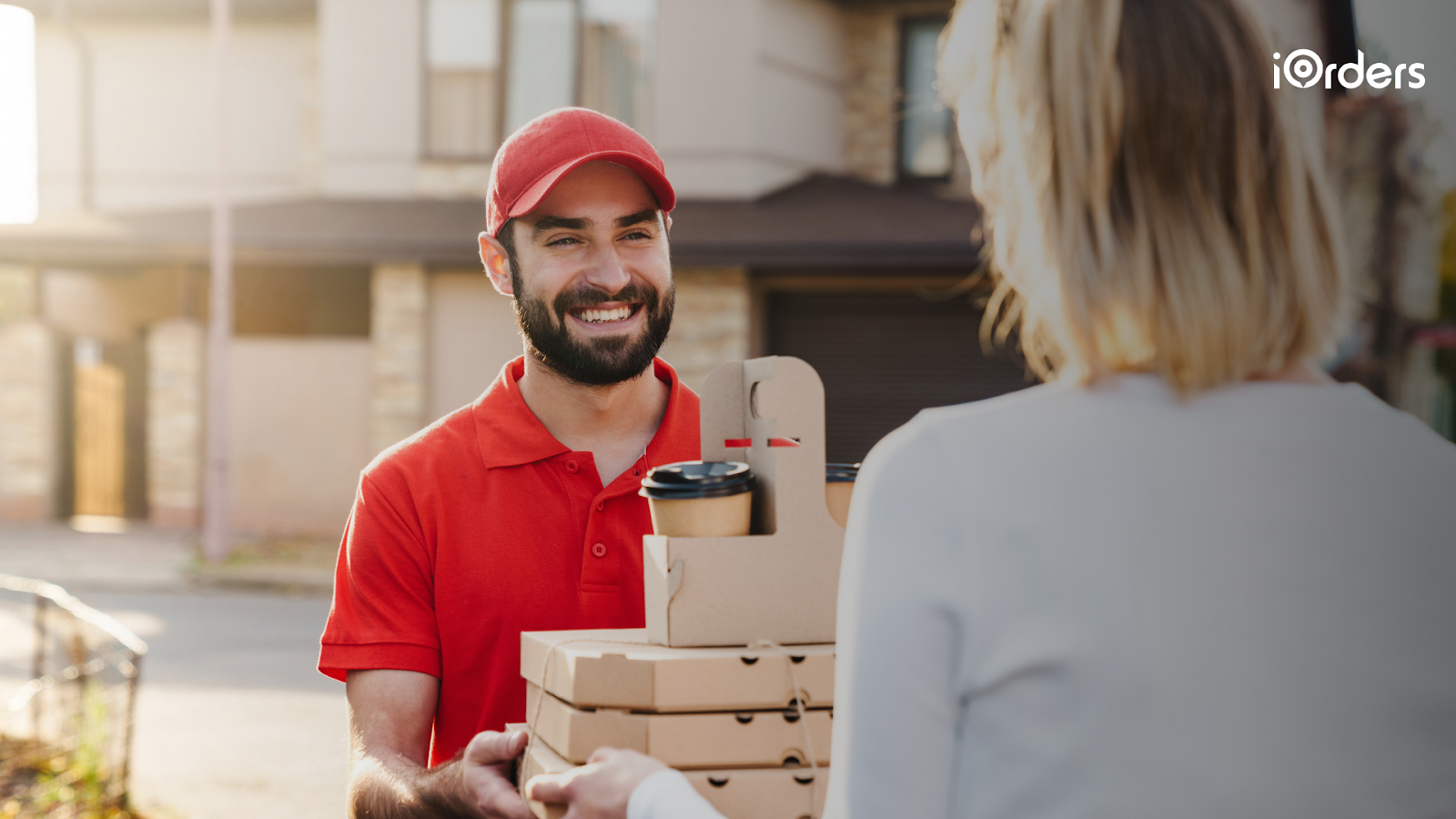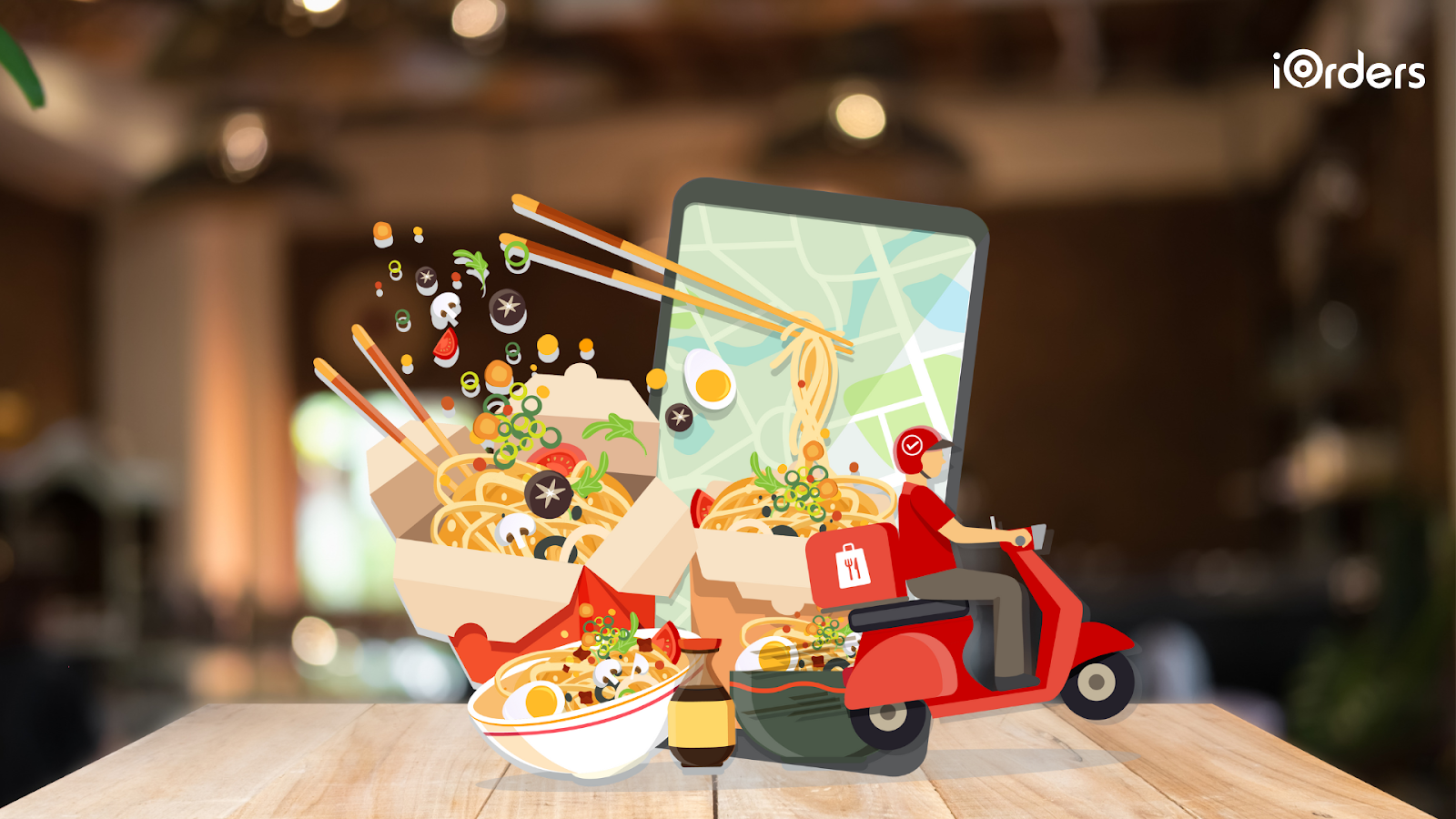June 11, 2025

Have you noticed how more people are choosing delivery over dining out? In fact, 76% of U.S. consumers order food for delivery as they enjoy eating at home. This growing trend has led many restaurants to open virtual restaurants.
While this creates new opportunities, it also brings tough competition. To succeed, you need more than just great food; you need to stand out online and connect with customers effectively.
In this guide, you'll learn about virtual kitchens and the best ways to market them. We'll also cover the advantages and disadvantages of running a virtual kitchen.
Have you ever considered running a restaurant without a physical dining space? That’s the idea behind a virtual restaurant, a food business that operates exclusively online. It takes orders through third-party delivery apps or its own website and relies on delivery and takeout rather than dine-in service.
Unlike traditional restaurants, it doesn’t have a storefront, dining area, or waitstaff. Instead, you prepare meals in a commercial kitchen, sometimes within an existing restaurant, and deliver them straight to customers.
Traditional restaurants rely on foot traffic, dine-in experiences, and a set menu. Virtual restaurants, on the other hand, focus solely on delivery.
This model allows you to test new cuisines, adjust menus based on demand, and reach a wider audience with minimal overhead costs. Without the expense of a large space, furniture, and in-house staff, you can maximize profits while staying flexible.
While the terms are often used interchangeably, virtual restaurants and ghost kitchens are not the same.
A virtual restaurant is a standalone brand with its own name, menu, and direct customer interaction. It builds brand loyalty and markets itself independently.
However, a ghost kitchen is a shared facility where multiple brands prepare food for delivery, often managed by third-party companies. Ghost kitchens focus on efficiency and volume, while virtual restaurants prioritize branding and customer engagement.
Ready to take full control of your online food business? With iOrder's Commission-Free Online Ordering, you can serve your customers directly with no third-party fees and no compromises. Build your brand online, customize your menu in real-time, suggest pairings, and promote repeat orders with integrated loyalty rewards. Best of all? You own the customer data and the relationship.
With a virtual restaurant, you control your identity, experiment with creative menus, and build a loyal following, all without the constraints of a physical location. But when to add a virtual restaurant? Let’s learn about it.

Are you thinking about expanding your restaurant but are unsure about the risks? A virtual brand lets you test new concepts without the high costs of opening a new location. You can launch a separate menu from your existing kitchen, targeting a different audience or tapping into trending cuisines, all while keeping your main business running as usual.
A virtual brand doesn’t replace your restaurant; it complements it. If your kitchen has underutilized capacity, you can introduce a new delivery-only menu without disrupting daily operations.
This strategy helps you increase revenue by making the most of your existing staff, ingredients, and equipment. It’s a low-risk way to grow without heavy investment.
Many restaurants have used virtual brands to scale successfully. Here are some of the successful virtual restaurants:
These brands prove that with the right strategy, you can expand your reach and boost profits, all from your current kitchen.
Adding a virtual brand is a smart way to diversify your business while keeping costs in check. But what makes virtual restaurants so appealing? Let’s explore the pros of a virtual restaurant and how it can benefit your bottom line.

Running a restaurant comes with challenges, but a virtual model helps you cut costs, stay flexible, and reach more customers. Here's how shifting to a delivery-only setup can work in your favor:
Without a physical dining space, you eliminate expenses like rent, utilities, and front-of-house staff. More of your revenue goes toward food quality, marketing, and customer experience rather than upkeep costs.
Virtual restaurants let you adjust your menu based on trends and customer preferences. You can experiment with limited-time offers, introduce seasonal dishes, or tweak portion sizes, all without the constraints of a traditional setup. If something isn't working, you can shift quickly.
By focusing on online ordering and delivery, you serve customers beyond your immediate location. Instead of relying on foot traffic, you tap into a larger audience through third-party delivery apps and direct online orders.
Launching a new restaurant can cost hundreds of thousands of dollars. A virtual restaurant allows you to enter the market at a fraction of that cost. You can use your existing kitchen space, share equipment, and start with minimal investment while testing new concepts.
With the right tech, you can simplify operations and improve efficiency. Online ordering systems, POS integrations, and data analytics help track customer preferences, manage inventory, and optimize delivery routes. They also give valuable insights to refine your business strategy.
Want to simplify your ordering process and improve efficiency? iOrder's Website and QR Ordering lets you receive direct orders 24/7, whether it's dine-in, pickup, or delivery. Display real-time menus and promotions, send orders straight to your POS, and cut down front-of-house workload so your team can focus on maintaining a great service.
A virtual restaurant helps you cut costs, increase revenue, and stay ahead of market trends. But like any business model, it has its challenges. So, let's see the cons of a virtual restaurant and how to overcome them.

A virtual restaurant comes with lower costs and flexibility, but it also has its challenges. Here’s what you need to consider before starting.
You rely on third-party apps like Uber Eats or DoorDash to reach customers. While they bring in orders, they also charge high commission fees. Plus, you have little control over delivery speed and food handling, which can impact customer satisfaction.
Without a dining space, you miss out on face-to-face interactions. Customers don’t get the full restaurant experience, making it harder to build loyalty. You need to find other ways to connect, like social media and strong branding.
The online food market is crowded. Many virtual brands offer similar menus, making it tough to stand out. Success depends on strong branding, unique dishes, and smart marketing.
Running a virtual restaurant means managing orders, delivery, and food prep without a traditional setup. Juggling multiple delivery apps and keeping food quality consistent can be tricky without the right systems in place.
Without a storefront, customers may forget your name, even if they love the food. You need strong online branding, a social media presence, and repeat customers to build recognition.
These challenges shouldn’t stop you, but they do require planning. To run a successful virtual restaurant, you need the right strategy. These challenges shouldn’t stop you, but they do require planning. To run a successful virtual restaurant, you need the right strategy.
So, where do you begin? Let’s break down the essential steps to get your virtual restaurant off the ground and running smoothly.
Starting a virtual restaurant takes more than a great menu; it demands strategic planning, market insight, and a clear vision. Here's how to get started the smart way:
1. Research the Market
Begin with a thorough market analysis. Understand local demand, your competitors, and what cuisine types are trending in your target area. Data-driven insight helps shape a concept that truly resonates.
2. Create a Business Plan
Just like any restaurant, your virtual brand needs a solid business plan. Factor in kitchen rentals, staffing, delivery logistics, and marketing. A strong plan helps you prepare for operational risks and scale wisely.
3. Assemble a Skilled Team
Even without a front-of-house, a virtual restaurant still needs skilled chefs and kitchen staff. Train your team to maintain quality, speed, and consistency with every order.
4. Develop a Test Menu
Build a structured, delivery-friendly menu. Use this for testing, staff training, and to attract early-stage investors. Your menu is your brand; make it count.
5. Secure Funding
While you won't need to invest in furniture or decor, you will need funds for tech tools, marketing, ingredients, and kitchen rental. Find options like business loans or food startup grants.
6. Think Local and Beyond
Customize your offerings to the local audience, but plan for scalability. Can your concept work across multiple neighborhoods or cities? Localization with an eye on expansion is essential.
7. Understand Regulations
Different states and municipalities have their own rules for delivery-only food businesses. Be sure you're compliant with health, safety, and licensing laws before you launch.
Now, let’s look at the best practices for running a virtual restaurant and how you can make yours a success.

Running a successful virtual restaurant takes more than great food. You need efficient systems, smart technology, and strong customer engagement. Here’s how to set yourself up for success.
Speed and accuracy are everything in a virtual restaurant. Simplify kitchen workflows, organize prep stations, and ensure your staff can handle high order volumes. Partner with reliable delivery services and consider offering direct delivery to maintain quality control.
A smaller, well-curated menu leads to faster prep times and better food quality. Focus on dishes that travel well and maintain their taste and texture after delivery. High-demand items with simple ingredients help reduce waste and maximize profits.
Adopt technology to manage operations smoothly. A POS system integrates online orders, tracks inventory, and streamlines payments. Data analytics help you understand customer preferences, while automated order management reduces mistakes and delays.
Without a physical location, your digital presence is your storefront. Use SEO, social media marketing, and email campaigns to reach potential customers. High-quality images, engaging content, and promotions can set you apart in a crowded market.
Even without in-person dining, customer experience is key. Respond to reviews, resolve complaints quickly, and offer perks like discounts for repeat orders. Building a loyal customer base keeps your business growing.
A virtual restaurant thrives on smart planning, the right tools, and strong branding. But managing everything on your own can be challenging. That’s where iOrders comes in to help you simplify operations and grow your virtual brand effortlessly.

iOrders is a comprehensive digital platform designed to help restaurants grow their online presence and increase revenue. Whether you are a traditional restaurant or a virtual brand, iOrders simplifies operations through smart technology and automation.
Here's how iOrders can directly benefit your virtual restaurant and help you overcome common challenges:
Third-party delivery apps charge high commissions, eating into your profits. iOrders allows you to accept orders directly through your own branded website or social media pages. You can generate more revenue per order, have full control over customer data, and a stronger connection with your audience.
With iOrders, you get a customized website where customers can browse menus and place orders seamlessly. It also supports QR code ordering, allowing diners to scan a code and order from their smartphones. This feature reduces wait times, improves efficiency, and enhances the customer experience.
Managing your delivery fleet can be costly and time-consuming. iOrders provides delivery logistics support, ensuring food reaches customers on time without the hassle of hiring drivers. This service allows you to expand your reach while focusing on what you do best: preparing great food.
Standing out in the crowded online food market requires strong digital marketing. iOrders help with social media marketing, paid ad campaigns, and email marketing to attract and retain customers. By increasing brand visibility, you can drive more orders and encourage repeat business.
Encouraging repeat customers is crucial for long-term success. iOrders offers customizable loyalty programs, including discounts, reward points, and special offers for frequent buyers. These programs help build customer loyalty and keep diners coming back.
Data-driven marketing gives you an edge over competitors. iOrders uses insights from customer preferences, order history, and engagement patterns to run automated campaigns. By targeting the right audience at the right time, you maximize your ad spend and increase conversions.
Online reputation matters and iOrders helps you manage it effortlessly. Its AI-powered system analyzes customer feedback, automates review responses, and identifies key trends. It allows you to address concerns quickly and improve customer satisfaction.
A branded mobile app can elevate your virtual restaurant's presence. With our custom mobile apps, customers can place orders, earn rewards, and receive promotions. It strengthens brand loyalty and enhances customer convenience.
A virtual restaurant lets you expand your food business without the high costs of a physical location. With lower overhead, flexible menus, and a wider reach, you can boost revenue while adapting to customer demand.
However, success depends on efficient delivery, strong branding, and smart technology to stand out in a competitive market. Managing these factors well can help you maximize profits and grow your business.
iOrders simplifies virtual restaurant management with commission-free online ordering, delivery support, marketing tools, and loyalty programs. Its technology helps you increase sales, improve efficiency, and build direct relationships with customers without relying on third-party platforms that charge high fees.
Ready to take your virtual restaurant to the next level? Book a free demo with iOrders today and see how it can help you boost revenue, simplify operations, and create loyal customers!